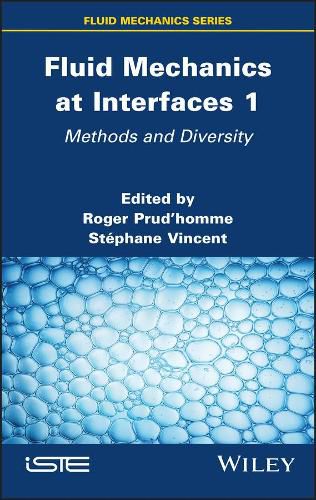Readings Newsletter
Become a Readings Member to make your shopping experience even easier.
Sign in or sign up for free!
You’re not far away from qualifying for FREE standard shipping within Australia
You’ve qualified for FREE standard shipping within Australia
The cart is loading…






Interfaces are present in most fluid mechanics problems. They not only denote phase separations and boundary conditions, but also thin flames and discontinuity waves. Fluid Mechanics at Interfaces 1 focuses on the science of interfaces, in particular, using various scientific methods of analysis relating to space, speed and time. Our investigation takes us from the microscopic or small scale (starting with molecular and nanoscopic scales) to the macroscopic (including meso and interstellar scales), and also explores the laws of interfaces (classical mechanics, quantum mechanics and relativistic mechanics).
Chapter 1 examines the questions raised by modeling interfaces in the presence of one or more fluid phases. Chapter 2 discusses the action of turbulence in liquid-vapor flows that contain both small, dispersed bubbles as well as large bubbles, with heat exchanges at the interfaces. In addition, a new model is presented, using large eddy simulation (LES). Chapter 3 studies an original method for calculating the drag force and thermal transfers in flows around networks of spherical particles, while Chapter 4 focuses on the relationships between interfaces and critical fluids.
Chapter 5 examines shearing, which causes anomalies in the Brownian motion of particles in strongly fluctuating near-critical mixtures, and Chapter 6 introduces basic concepts related to combustion interfaces, raising the question of the combustion of solids, before ending with a brief presentation of the Rankine-Hugoniot theory and a historical overview of the research carried out in the field of combustion.
$9.00 standard shipping within Australia
FREE standard shipping within Australia for orders over $100.00
Express & International shipping calculated at checkout
Interfaces are present in most fluid mechanics problems. They not only denote phase separations and boundary conditions, but also thin flames and discontinuity waves. Fluid Mechanics at Interfaces 1 focuses on the science of interfaces, in particular, using various scientific methods of analysis relating to space, speed and time. Our investigation takes us from the microscopic or small scale (starting with molecular and nanoscopic scales) to the macroscopic (including meso and interstellar scales), and also explores the laws of interfaces (classical mechanics, quantum mechanics and relativistic mechanics).
Chapter 1 examines the questions raised by modeling interfaces in the presence of one or more fluid phases. Chapter 2 discusses the action of turbulence in liquid-vapor flows that contain both small, dispersed bubbles as well as large bubbles, with heat exchanges at the interfaces. In addition, a new model is presented, using large eddy simulation (LES). Chapter 3 studies an original method for calculating the drag force and thermal transfers in flows around networks of spherical particles, while Chapter 4 focuses on the relationships between interfaces and critical fluids.
Chapter 5 examines shearing, which causes anomalies in the Brownian motion of particles in strongly fluctuating near-critical mixtures, and Chapter 6 introduces basic concepts related to combustion interfaces, raising the question of the combustion of solids, before ending with a brief presentation of the Rankine-Hugoniot theory and a historical overview of the research carried out in the field of combustion.